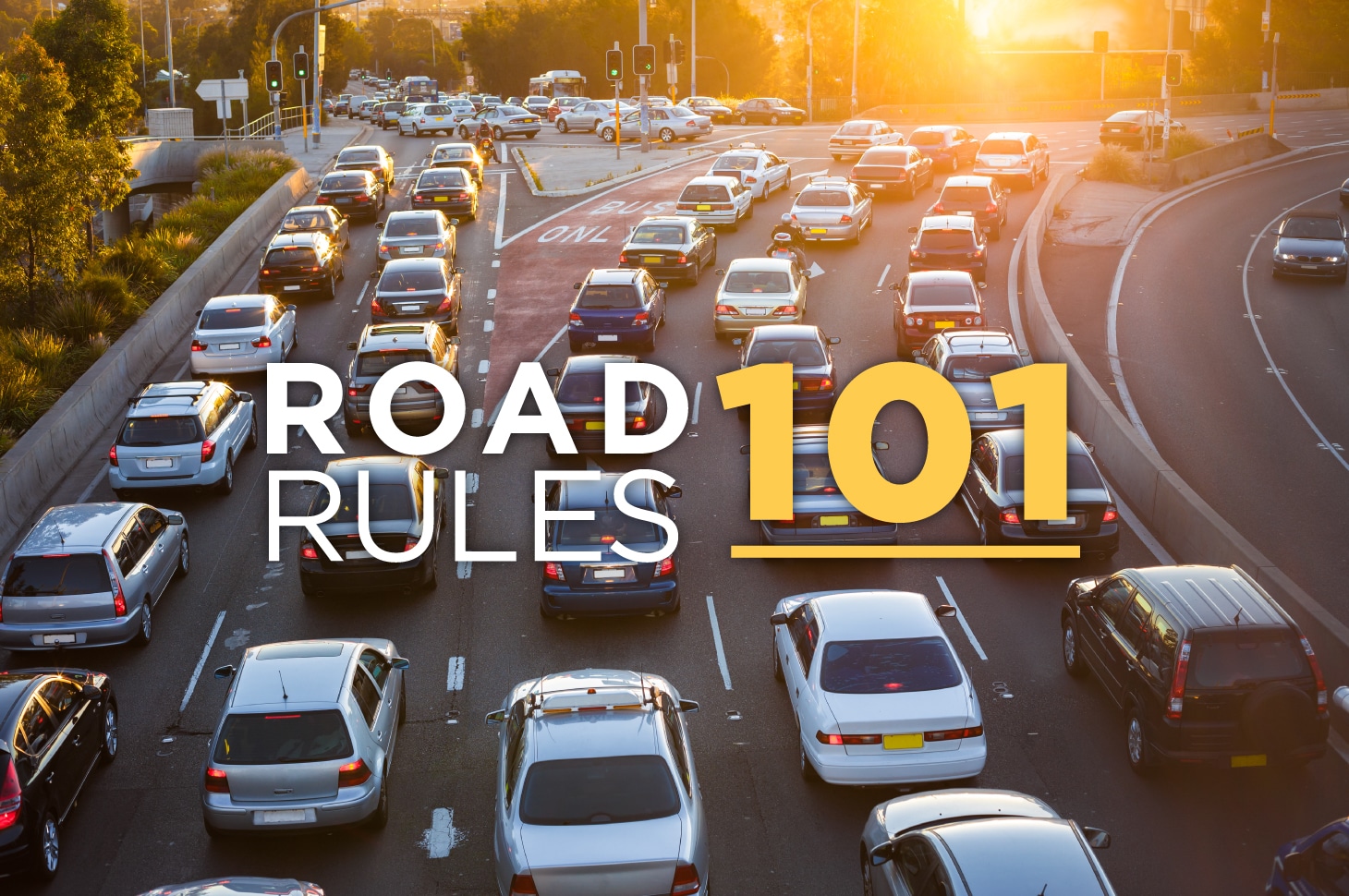

 Does this scenario sound at all familiar? You complete your Driving Test with immaculate perfection, adhering to all the road rules with meticulous precision. And then… one week later, you’ve settled into your own comfortable style of driving that is less about abiding to rules and more about convenience and personal practicality.
Does this scenario sound at all familiar? You complete your Driving Test with immaculate perfection, adhering to all the road rules with meticulous precision. And then… one week later, you’ve settled into your own comfortable style of driving that is less about abiding to rules and more about convenience and personal practicality.
Well… this individual driving style that you’ve become so accustomed to – and tweaked over the years – will definitely require some alterations that keep you in accordance with the national driving regulations.
We do understand that some of the road rules can often seem ambiguous and a bit confusing. So here’s a quick 101 Refresher Course* to help you avoid any unnecessary fines or collisions.
This is one area of road rules that seems to have defined its own new rule: when someone wants to enter your lane, speed up and make every effort to close the gap as quickly as possible so that they cannot enter.
Well, no, this is not actually how it is intended to occur. Be courteous to your fellow drivers. If you expect them to give way for you, then the same niceties need to be extended in return.
Roundabouts can be very confusing, especially if you are unfamiliar with the area and not sure which exit you need to take. Extreme caution and concentration are always advisable when using a roundabout, as fellow drivers may also be unsure of which lane to be in. Here are some general rules to remember:
Do we even need to state the obvious? Unless you have a Bluetooth or hands-free device, do not use your phone while driving. Avoid the urge to quickly check an IM or Facebook update as you hear the notification sound. And definitely do not attempt to reply to any text messages or emails while driving! Social media really can wait a mere ten minutes, believe it or not.
These are just a few of the everyday road rule basics that need to be adhered to. At all times, drive cautiously, obey road rules and be aware of other motorists, cyclists and pedestrians. A few extra seconds of concentration can spare you a lot of unnecessary time, money and inconvenience. And if the unfortunate does occur, at least you can have peace of mind that you adhered to all relevant road rules and made every effort to avoid any risks.
* All Road Rules contained in this post were correct according to Queensland law as of January 2015.



For 10 years, our focus has been on one thing: to provide one style of product and to do it well.
Our wheel stops, speed humps and rumble bars meet Australian Standards, don’t fade, and we’ve never needed to replace one.

For 10 years, our focus has been on one thing: to provide one style of product and to do it well.
Our wheel stops, speed humps and rumble bars meet Australian Standards, don’t fade, and we’ve never needed to replace one.